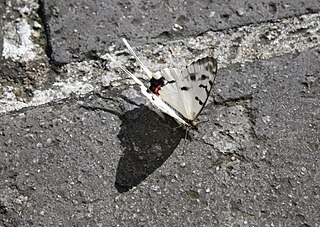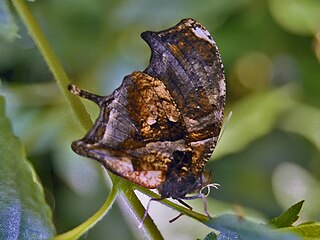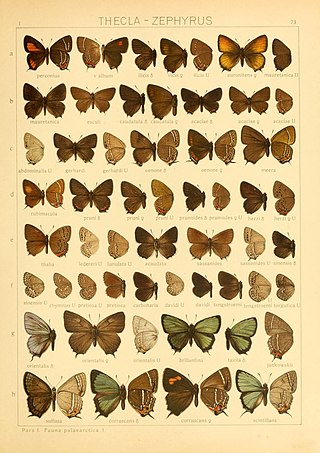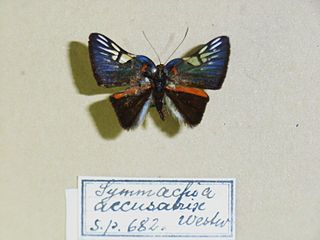
Otto Staudinger was a German entomologist and a natural history dealer considered one of the largest in the world specialising in the collection and sale of insects to museums, scientific institutions, and individuals.

Delias is a genus of butterflies. There are about 250 species of the genus Delias, found in South Asia and Australia. The genus is considered to have its evolutionary origins in the Australian region.

Thecla is a genus of butterflies, described by Johan Christian Fabricius in 1807, belonging to the family Lycaenidae. The species are found in the Palaearctic.

Poritia is a genus of lycaenid butterflies. The species of this genus are found in the Indomalayan realm. Poritia was erected by Frederic Moore in 1887.

The northern birch mouse is a small rodent about 5 to 8 cm long, weighing 5 to 13 g. It lives in northern Europe and Asia in forest and marsh zones.

Sericinus is a genus of swallowtail butterflies placed in the subfamily Parnassiinae. The genus has a complex history and a multiplicity of names have been applied to its single species.

Plebejus is a genus of butterflies in the family Lycaenidae. Its species are found in the Palearctic and Nearctic realms.

Favonius is a Palearctic genus of butterflies in the family Lycaenidae.

Diacrisia sannio, the clouded buff, is a moth of the family Erebidae. The species was first described by Carl Linnaeus in his 1758 10th edition of Systema Naturae.

Brenthis ino, the lesser marbled fritillary, is a butterfly of the family Nymphalidae.
Nudina is a monotypic moth genus in the subfamily Arctiinae described by Staudinger in 1887. Its single species, Nudina artaxidia, was first described by Arthur Gardiner Butler in 1881. It is found in the Russian Far East (Primorye), China, Taiwan, Korea and Japan.

Cymothoe is a genus of butterflies in the subfamily Limenitidinae, the admirals and relatives. They are known commonly as gliders. The genus is distributed in the Afrotropical realm, where species are found mainly in forest habitat. mainly in the Guinean Forests of West Africa and the Congolian forests.

Consul fabius, the tiger leafwing, is the most common and well known species of the genus Consul of subfamily Charaxinae in the brush-footed butterfly family (Nymphalidae). It is found all over the Neotropics.

Satyrium prunoides is a butterfly of the family Lycaenidae. It was described by Otto Staudinger in 1887. It is found in the Russian Far East, Mongolia, north-eastern China and Korea.

Symmachia is a genus in the butterfly family Riodinidae present only in the Neotropical realm.
Chelis kindermanni is a moth in the family Erebidae. It was described by Otto Staudinger in 1867. It is found in Russia, Mongolia and China.














